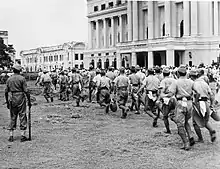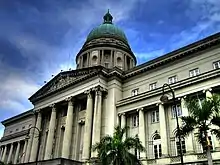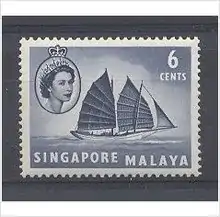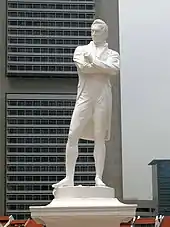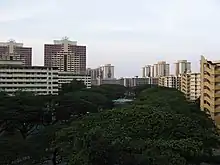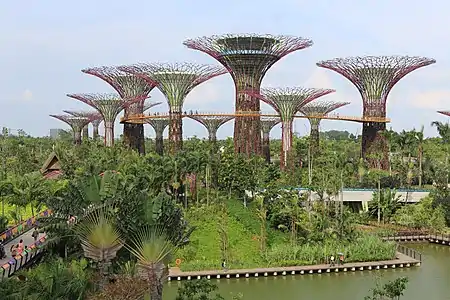.jpg.webp) Map of Singapore Singapore (/ˈsɪŋ(ɡ)əpɔːr/ ⓘ SING-(g)ə-por), officially the Republic of Singapore, is an island country and city-state in maritime Southeast Asia. It is located about one degree of latitude (137 kilometres or 85 miles) north of the equator, off the southern tip of the Malay Peninsula, bordering the Strait of Malacca to the west, the Singapore Strait to the south, the South China Sea to the east, and the Straits of Johor to the north. The country's territory comprises one main island, 63 satellite islands and islets, and one outlying islet; the combined area of these has increased by approximately 25% since the country's independence as a result of extensive land reclamation projects. It has the second highest population density of any country in the world, although there are numerous green and recreational spaces as a result of urban planning. With a multicultural population and in recognition of the cultural identities of the major ethnic groups within the nation, Singapore has four official languages: English, Malay, Mandarin, and Tamil. English is the lingua franca, with its exclusive use in numerous public services. Multi-racialism is enshrined in the constitution and continues to shape national policies in education, housing, and politics.
Singapore's history dates back at least eight hundred years, having been a maritime emporium known as Temasek and subsequently a major constituent part of several successive thalassocratic empires. Its contemporary era began in 1819, when Stamford Raffles established Singapore as an entrepôt trading post of the British Empire. In 1867, the colonies in Southeast Asia were reorganised, and Singapore came under the direct control of Britain as part of the Straits Settlements. During World War II, Singapore was occupied by Japan in 1942 and returned to British control as a separate Crown colony following Japan's surrender in 1945. Singapore gained self-governance in 1959 and, in 1963, became part of the new federation of Malaysia, alongside Malaya, North Borneo, and Sarawak. Ideological differences, most notably the perceived encroachment of the egalitarian "Malaysian Malaysia" political ideology led by Lee Kuan Yew into the other constituent entities of Malaysia—at the perceived expense of the bumiputera and the policies of Ketuanan Melayu—eventually led to Singapore's expulsion from the federation two years later; Singapore became an independent sovereign country in 1965. After early years of turbulence and despite lacking natural resources and a hinterland, the nation rapidly developed to become one of the Four Asian Tigers. With its growth based on international trade and economic globalisation, it integrated itself with the world economy through free trade with minimal-to-no trade barriers or tariffs, export-oriented industrialisation, and the large accumulation of received foreign direct investments, foreign exchange reserves, and assets held by sovereign wealth funds. As a highly developed country, it has the highest GDP per capita (PPP) in the world. Identified as a tax haven, Singapore is the only country in Asia with a AAA sovereign credit rating from all major rating agencies. It is a major aviation, financial, and maritime shipping hub and has consistently been ranked as one of the most expensive cities to live in for expatriates and foreign workers. Singapore ranks highly in key social indicators: education, healthcare, quality of life, personal safety, infrastructure, and housing, with a home-ownership rate of 88 percent. Singaporeans enjoy one of the longest life expectancies, fastest Internet connection speeds, lowest infant mortality rates, and lowest levels of corruption in the world. Singapore is a unitary parliamentary republic with a Westminster system of unicameral parliamentary government, and its legal system is based on common law. While the country is a multi-party democracy with free elections, the government under the People's Action Party (PAP) wields significant control and dominance over politics and society. The PAP has governed the country continuously since full internal self-government was achieved in 1959, currently holding 79 out of 93 elected seats in Parliament. One of the five founding members of ASEAN, Singapore is also the headquarters of the Asia-Pacific Economic Cooperation Secretariat, the Pacific Economic Cooperation Council Secretariat, and is the host city of many international conferences and events. Singapore is also a member of the United Nations, the World Trade Organization, the East Asia Summit, the Non-Aligned Movement, and the Commonwealth of Nations. (Full article...)Selected article -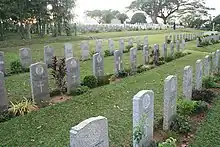 Graves at the Kranji War Cemetery – photographed on 13 November 2005 Selected picture Changi Airport T3 baggage collection point The baggage collection point of Changi Airport's Terminal 3. The green wall can be seen on the right. Read more... General imagesThe following are images from various Singapore-related articles on Wikipedia.
Selected biography -Tang Da Wu (Chinese: 唐大雾; pinyin: Táng Dàwù, pronounced [tʰɑ̌ŋ tâ.û]; born 1943) is a Singaporean artist who works in a variety of media, including drawing, painting, sculpture, installation art and performance art. Educated at Birmingham Polytechnic and Goldsmiths' College, University of London, Tang gave his first solo exhibition, consisting of drawings and paintings, in 1970 at the Singapore Chinese Chamber of Commerce and Industry. He began engaging in performance art upon returning to Singapore in 1979 following his undergraduate studies. In 1988, Tang founded The Artists Village. The first art colony to be established in Singapore, it aimed to encourage artists to create experimental art. Members of the Village were among the first contemporary artists in Singapore, and also among the first to begin practising installation art and performance art. There, Tang mentored younger artists and informed them about artistic developments in other parts of the world. He also organized exhibitions and symposia at the Village, and arranged for it to collaborate with the National Museum Art Gallery and the National Arts Council's 1992 Singapore Festival of the Arts. (Full article...)Did you know (auto-generated)
In this month
More did you know -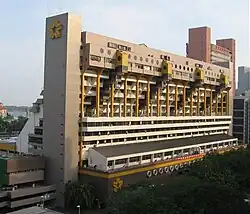 Golden Mile Complex
Selected panoramaSungei Serangoon (Malay for Serangoon River; Chinese: 实龙岗河) is a river in the north-eastern part of Singapore. The 6-kilometre river starts as a canal near Tampines Road, and flows through Hougang, Sengkang, Punggol, Lorong Halus and Pasir Ris, before emptying into the Serangoon Harbour. The river is also known as the Serangoon Estuary. Singapore topicsRelated portalsSoutheast Asia Other Countries Tasks Things you can do
CategoriesSelect [►] to view subcategories
 Singapore Central Business District Singapore Singapore-related lists Buildings and structures in Singapore Singaporean culture Economy of Singapore Education in Singapore Environment of Singapore Geography of Singapore Government of Singapore Health in Singapore History of Singapore Organisations based in Singapore People from Singapore Politics of Singapore Society of Singapore Singapore stubs WikiprojectsRelated Wikiprojects:
Associated WikimediaThe following Wikimedia Foundation sister projects provide more on this subject:
Discover Wikipedia using portals
|
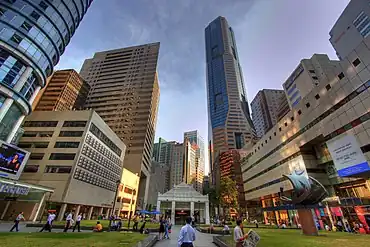
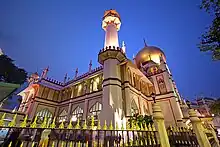
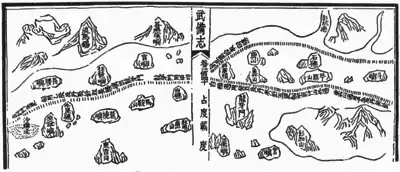
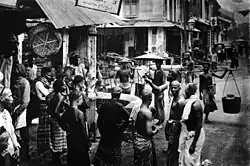
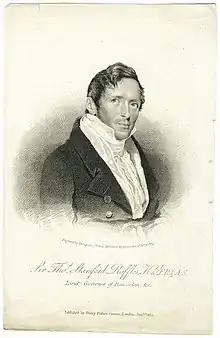
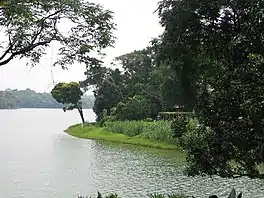
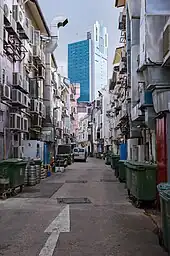
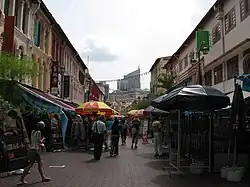
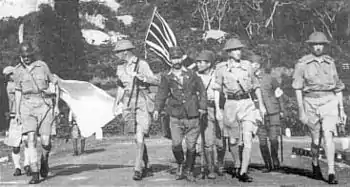

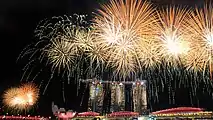
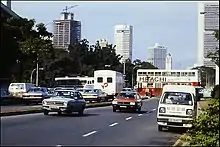
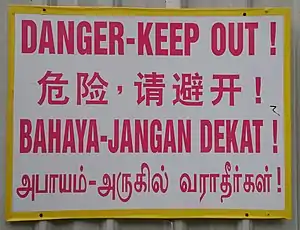
.jpg.webp)


.jpg.webp)
%252C_St_Andrew's_Cathedral_--_2019_--_4534.jpg.webp)
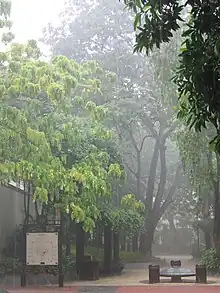



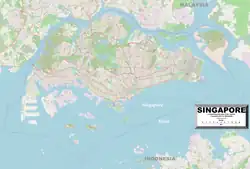
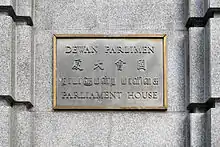
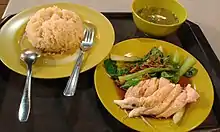
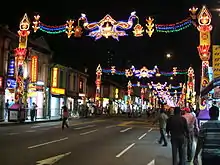


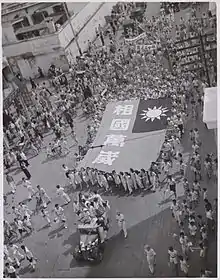
_by_Lieutenant_Philip_Jackson.jpg.webp)
